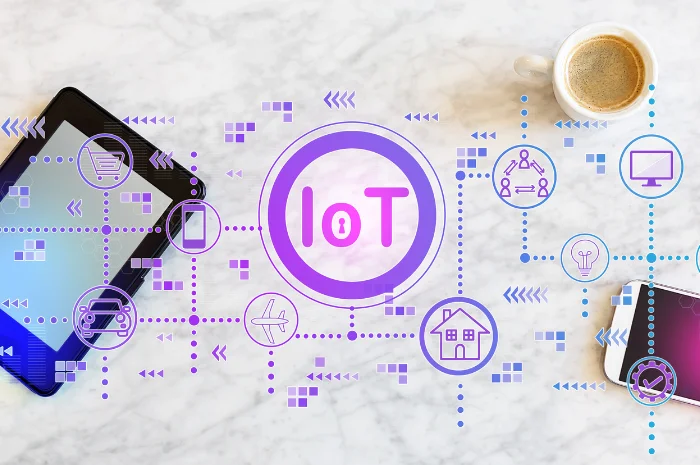We are talking about emotional AI- the powerful combination of artificial intelligence and psychology that enables machines to feel your emotions. This is no longer all about the data. It’s about understanding the emotions behind your choices, not just your likes and dislikes. It is about realizing the emotional undercurrent that lies beneath every single thing we do online or offline.
And, yes, brands are already leveraging Emotional Intelligence in AI to learn more about customers and their behaviors, even those that are hard to identify with traditional insights. Now let’s see how emotion detection AI improves business and user insights.
What is Emotional AI?

Emotional AI, also called affective computing, fundamentally involves technology that identifies and interprets human emotions. These systems do not think like humans, but they are trained to analyze your facial expressions, voice tone, word choice, and even your physical responses, such as heart rate or by tracking eye movement, to gauge your emotional state.
Imagine a customer service chatbot that picks up on your frustration and adjusts its tone to be more supportive. Or an online advertisement that modifies according to whether someone appears happy or frowning. This is Emotional AI at work, and it is already changing retail, healthcare, education, and entertainment.
How Does Emotional AI Identify Emotions?

Here is a breakdown of the tools and techniques that drive this science-fiction-sounding tech:
1. Facial Expression Recognition
Face speaks volumes. Even without words, the face tells a lot about how you are feeling.
Emotion AI applies sophisticated image processing and a psychological framework known as the Facial Action Coding System (FACS) to determine what you are communicating through your facial expressions.
- Raising eyebrows at a slight angle may express curiosity.
- A downturn of the lips may express sadness or disapproval.
- Wrinkles around the eyes when you smile may signal genuine happiness.
Often lasting only a split second, these micro-expressions usually go unnoticed by people, but AI can spot and analyze them in real-time.
Most brands today employ cameras in digital billboards, shopping kiosks, or mobile apps to scan customers’ expressions. This allows them to know how individuals are responding to products or messages without the necessity of verbal feedback.
2. Voice Tone Analysis
How we articulate something usually tells us more than the words we select. Emotional AI pays attention to the vocal inflections like pitch, volume, pace, and tone to identify emotional states.
- A fast, high-pitched voice can signal either excitement or nervousness..
- A slow, low, and flat tone may indicate boredom, depression, or possibly anger.
- Trends in speech rhythm, such as abrupt pauses or hasty speech, may indicate hesitation or apprehension.
In call centers, voice-powered AI solutions may immediately identify if a customer is agitated or lost. Depending on that, the system can transfer the call to a live agent or provide a more sympathetic answer.
This technology is also being applied in the healthcare field to identify early indicators of stress, depression, or any other emotional disorders, simply by listening to an individual talk.
3. Text-Based Sentiment Detection
Written language- emails, messages, reviews, or even social media posts can also pack an enormous amount of emotional intensity. Through Natural Language Processing (NLP) and sentiment analysis, Emotional AI can detect and interpret:
- The words that are used
- The tone of the language
- The structure of the sentences
- The employment of punctuation or emojis
For instance:
- “I am so excited about this product!” would be positive.
- “I guess it is okay, but not what I expected.” could be neutral or mixed.
- “This is the worst experience ever!” would be obviously negative.
Some sophisticated tools even pick up on sarcasm, irony, or passive aggression, something even most basic algorithms continue to miss. Brands employ this to measure customer sentiment, track public opinion, or even customize chatbot replies.
4. Biometric and Physiological Feedback
In addition to faces, voices, and texts, Emotional AI can also respond to your body’s physical cues. Thanks to wearable sensors, cameras, and wearables, the system can track:
- Heart rate: Spikes can be an indicator of stress or excitement.
- Skin temperature: Changes can be an indicator of anxiety or discomfort.
- Eye movement: Following what you look at can indicate interest or confusion.
- Pupil dilation: Can be an indicator of cognitive effort or emotional arousal.
In more complex environments, such as cars or hospitals, these signals are supplemented with facial and voice data to provide a complete emotional portrait of the user.
Consider a car that detects you are falling asleep and subtly plays happy music, changes the lighting, or suggests a coffee break. Or a meditation app that slows down the tempo when it identifies high stress levels using your smartwatch.
Why Do Brands Care About Customers’ Emotions?

Emotions lead to decisions. From buying a product to watching a video or writing a review, customers’ emotions play a key role in shaping their actions. Brands wish to access this emotional level for a variety of reasons:
- To know what speaks to their people
- To make marketing and content more personal
- To enhance customer experiences
- To better forecast future behavior
Here is how different industries are already leveraging Emotional AI:
1. Emotion-Based Advertising
The intention of each advertisement is to get a response- laughter, curiosity, nostalgia, or excitement. Emotional AI assists advertisers in testing and perfecting their content through the measurement of how actual people respond to each frame, sound, or slogan.
- If an ostensibly “funny” ad fails to elicit a smile from people, the brand can rewrite or re-shoot it.
- Computerized billboards with emotion detectors can change ads in real time based on the facial emotions of passersby.
This means businesses can bypass speculation and craft ads that are emotionally compelling, rather than merely visually appealing.
2. Tailored Shopping Experiences
Both online and offline retailers are leveraging Emotional AI to create more personalized and emotionally responsive shopping experiences.
- In physical stores, intelligent mirrors can recognize your expression and modify apparel recommendations based on that. If the customer seems hesitant, it may suggest an alternative color or style.
- Online sites monitor emotional signals through camera feed (provided permission is given) or track scrolling and click patterns to surmise your mood and provide more appropriate products or promotions.
This provides a more personalized experience, raising the likelihood of a sale and making the customer feel heard.
3. Virtual Mental Health Assistants
Applications such as Woebot apply Emotional AI to provide talk therapy and mental health care. They scan users’ text messages or voice inputs for indications of anxiety, sadness, stress, or loneliness and send back encouraging messages, mindfulness reminders, or motivational cues.
Emotion-sensing AI is used by some hospitals to track patients, particularly children, the elderly, or those who cannot speak, to evaluate their emotional status.
This technology provides timely assistance and early identification of emotional problems, making healthcare more compassionate.
4. Emotion-Aware Online Learning Tools
In online classrooms, teachers may not always know whether a student is bored, lost, or daydreaming.
- Emotional AI fills in the gaps by monitoring:
- Eye movement (Are students focusing on the screen?)
- Facial cues (Do they appear confused?)
- Level of engagement (Are they engaging with the material?)
Teachers can then tailor lessons or offer additional assistance to struggling students based on this. This renders online learning more interactive, customized, and productive.
5. Safer Driving with Emotion Detection
Automakers are putting Emotional AI in cars to avoid accidents resulting from fatigue or distraction. The cameras and sensors within the car can:
- Watch your blinking rate (slow blinking means you might be sleepy)
- Check where your attention is- are your eyes on the road?
- Pick up on yawning or head nodding
- Sense stress from the voice if you are talking to voice assistants
If warning signs of danger are picked up, the vehicle can sound an alarm, recommend a break, or engage autonomous driving mode (if available in advanced models). This adds an emotional safety layer to your journey.
The Business Advantages of Emotional AI

Beyond the cool factor, Emotional AI is of tangible benefit to businesses:
- Greater Insights: Businesses now gain more than just data on what consumers are doing- they understand why they are doing it.
- Improved Engagement: Emotionally attuned messages resonate more effectively with audiences.
- More Human-like Interactions: AI that can “feel” enhances tech-driven services, such as chatbots, voice assistants, and robots, making them more relatable, empathetic, and comforting to users.
- Faster Feedback Loops: Brands can adjust campaigns on the fly based on real-time emotional reactions.
- Competitive Advantage: Businesses that understand customer emotions can build stronger brand loyalty and stand out in crowded markets.
The Ethical Side of Emotional AI
With great power comes great responsibility, and Emotional AI is no exception. Here are a few concerns:
1. Consent and Privacy
Are people fully aware that their emotions are being monitored? A lot of individuals may not know their webcam or voice is under analysis. Transparency and explicit consent are important in order not to misuse it.
2. Misinterpretation and Cultural Bias
What may be a smile in one culture could represent friendliness, but in another culture, nervousness or even sarcasm.
If AI is conditioned predominantly in one data set, it can misinterpret emotions in individuals from other parts of the world, causing biased or inappropriate interactions.
3. Abuses with Emotional Data
Businesses might employ emotional stimuli to play games with users, pushing them to make spontaneous buys, political beliefs, or attitudes. There is a delicate balance between empathy and manipulation, and it is important that this line is never crossed.
4. Emotional Monitoring
Continuous tracking of emotions, even for positive reasons, can be invasive or creepy. It is critical that users must always be able to opt out and manage what information is being gathered.
The Future: Where is Emotional AI Heading?
As Emotional AI continues to develop, we may soon witness:
- Intelligent homes that adjust music, lighting, or temperature according to your mood.
- Virtual friends that detect loneliness and initiate conversations.
- Learning apps that dynamically change difficulty levels based on how frustrated or excited you get.
- Healthcare platforms that forecast burnout, anxiety, or emotional exhaustion.
- Marketing platforms that create content based on the real-time emotional currents of millions.
However advanced this technology becomes, one principle has to remain at the core: Human emotions need to be treated with respect, not manipulated.
Final Thought: Are We Smiling for Ourselves or the Algorithm?
Emotional AI, a key part of advanced AI services, is opening up a world where machines can not only see and hear us but also feel us, at least to some extent. It holds the potential to make technology more human. More helpful. More caring.
By making technology more intuitive and empathetic, it has the potential to enhance user experience, customer engagement, and operational efficiency across industries.
However, as we enable machines to understand facial expressions, tone of voice, and behavioral cues, important questions arise: Who is collecting this data, and for what purpose?
As we integrate emotional intelligence into our digital ecosystems, the focus must remain on building trust-driven, ethical solutions that foster connection rather than control.







